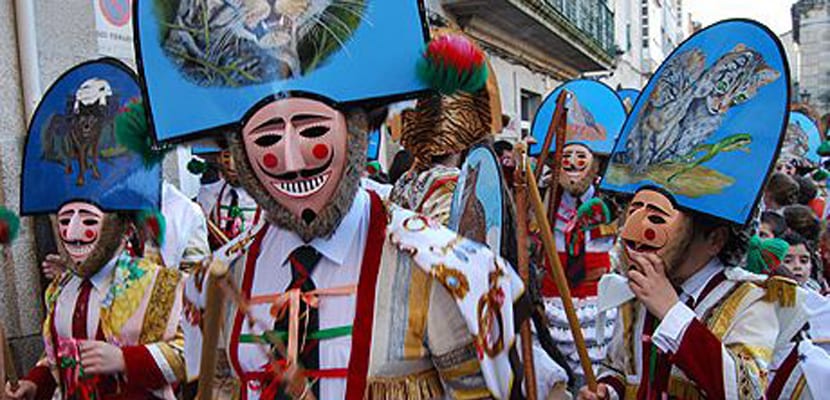
Yes, we already know that if we talk about Carnival we usually think of those in Rio de Janeiro, and to a lesser extent in those of Tenerife. But perhaps you did not know that in the north, and specifically in GaliciaThere are totally different Carnivals, which have been maintained over the decades and which have kept many customs and traditions that are really curious for visitors.
We will go mainly to the Ourense province, which has the longest and most traditional Carnivals, where surprising characters are seen and where they carry out festivities that leave those who think that Carnival is only about dressing up and dancing. In any case, this is not the only province, since there are peculiar festivals in all of them, and this holiday is experienced as something special and really fun. It is time to put aside the conventions and let ourselves be carried away by the spirit of Carnival.
I enter
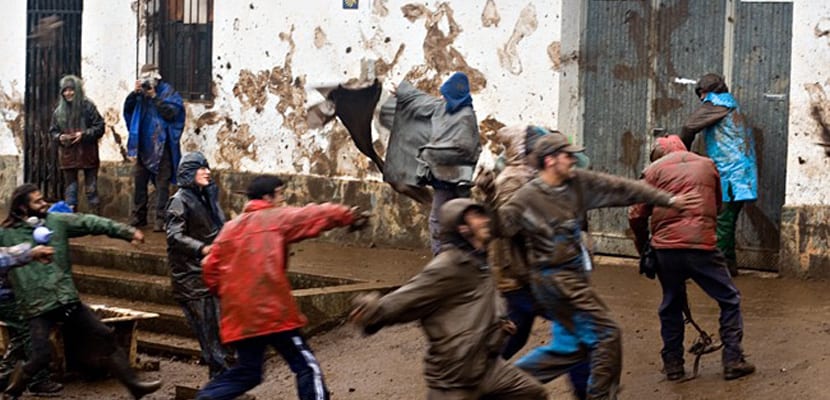
The first thing the visitor who arrives in Galicia on these dates should know is that here we talk about Entroido, which is the word with which we call the Carnivals. There are many other terms that will sound like Chinese to you, since in each province and festival there are words that designate exclusive things. Come on, the Galician language is really rich in traditions and special words that we like to show off.
You should also familiarize yourself with the 'cacheiras', which are the pig's heads salty that you will see in many places and that are a symbol of this date in which Lent begins. Androlla is a typical sausage from the interior. If we talk about carnival characters, the 'cigarillos' will surely sound familiar to you, they are those characters with wooden masks and large hats with the 'xocas' that are large bells attached to the waist.
There is also the 'Shock' in many areas of Ourense, and that in general is used to talk about those costumes that are made by mixing garments to give an appearance at least strange, but without representing anyone in particular. The 'madamas' and the 'galans' are very colorful characters who do not wear masks in the south of Pontevedra, in Vilaboa and Cangas. There is also the 'carauta', character of the entroido de Allariz.
Entered in Xinzo de Limia
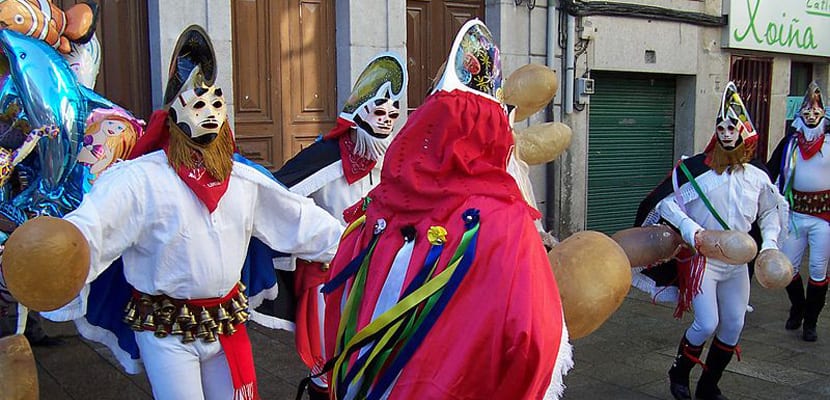
This is one of the longest carnivals in the world, since it lasts nothing more and nothing less than five weeks in which celebrations follow each other more surprising than the previous one. They are undoubtedly the best known in all of Galicia. They begin with Petardazo Saturday, but are normally considered to begin with Faraleiro Sunday, in which neighbors and visitors throw flour in the street. The following week follows with Oleiro Sunday, where the 'waves' are passed, which are clay containers filled with wine, water, confetti or sweets. Whoever likes it, must pay for the wines to their friends and endure the ridicule of the rest.
Corredoiro Sunday It is the Sunday before Entroido, in which the first 'screens', the most typical characters, go out onto the street. In the morning there is a meeting of 'screens' in the main square of the town hall, and everyone dresses up and dances to the rhythm of the brass bands. In the afternoon, the 'capuchons', a traditional costume with a tunic and hood, take to the streets. During the Entroido the 'screen' stand out, the characters who carry bladders with which they scare passersby. It all ends on Piñata Sunday.
Entered in Verín
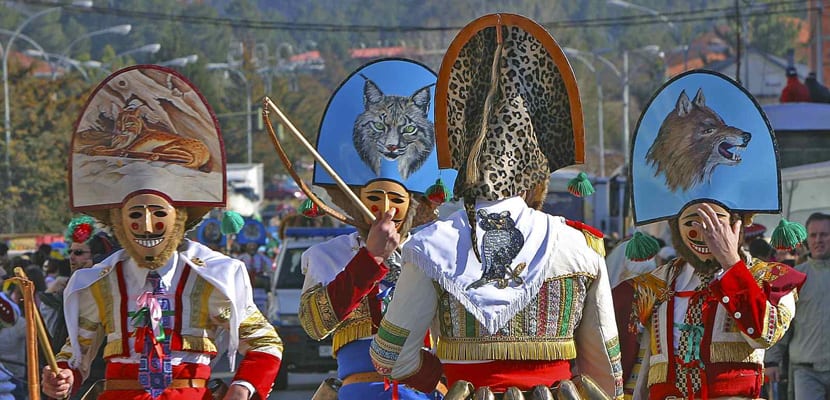
Here are famous the 'cigaretóns', which leave Corredoiro Sunday after the morning masses. They wear typical clothing, but the most recognized are their typical masks, which are already a symbol of Entroido in Galicia. Masks made of wood and painted, with a large hat also in wood with painted scenes. Also the 'xocas' that they carry and that make a great noise while they run are characteristic.
These characters come to the carnivals so that everyone joins them. They are supposed to do chastise those who are not disguised, although today they are a symbol that runs through the streets giving a show. These are not to be missed.
Eating during Entroido

If you go to Galicia you can never stop trying its gastronomy, and there are many typical dishes. During these holidays what you have to drink is a typical Galician stew full of meat, because Lent begins and we are supposed to deprive ourselves of it. The stew is meat such as pork shoulder, ribs, bacon or cacheira, all from the pork. It is accompanied by turnip greens, the most typical vegetable.
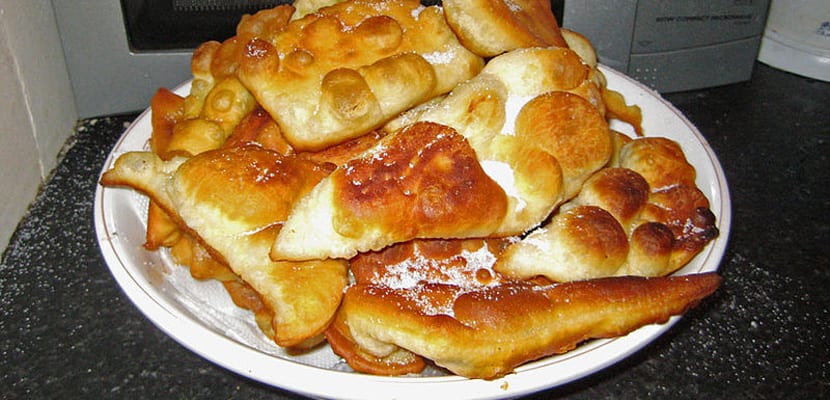
You can also try the dessert in any corner of Galicia. The 'pancakes' are like crepes, and are usually eaten sweet, with sugar, honey or cream. The ears are another typical dessert, and there are so many different recipes. You can become true experts by trying all the ones that are made, and it seems that none of them taste the same. It is a cold dough with a touch of anise.
As a native of Xinzo that I am, I am ashamed to read that description of the corredoiro, please before writing to inform you better because you have screwed up to the bottom
Hi lili, I'm sorry I made a mistake in the text. Obviously, we have not always been able to live the experiences of which we speak and to err is human. I have tried looking for more information and have already modified it. I hope it is to your liking. Being from Xinzo you will know exactly what carnivals are like, unfortunately I have never been able to go, since they are far away, although I would love to. It is also true that little information is obtained online about the carnivals of Galicia, other than general data and party programs, which is a shame, that is why I wanted to compile a bit of everything that is done, and yes, I have been able to err in something. If there is something that is wrong, I would be grateful if you would tell me what, in this way I can modify it, so that the people who read it are interested in the Carnivals in Galicia, which are very different from the rest, we know that well. Thanks for the clarification and I hope that now it is well. Greetings